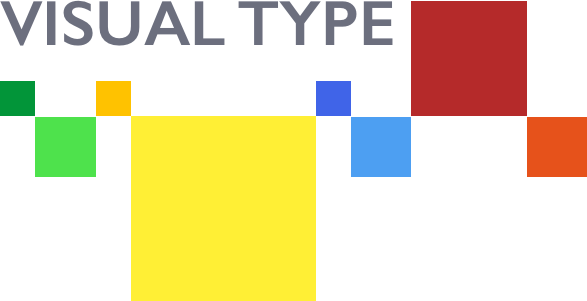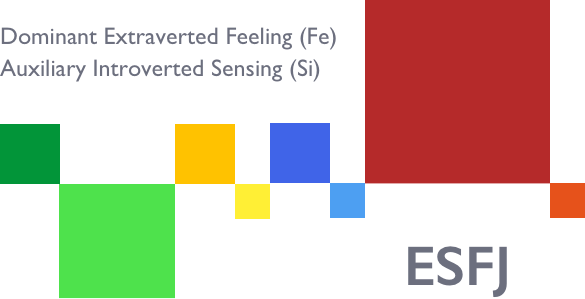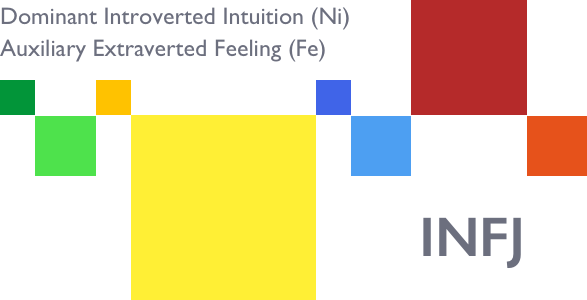Visual Type

A clear and easy-to-grasp way to understand the basics of C.G. Jung’s theory of how people take in information and make decisions
The goal of Visual Type was to create a way for individuals who were not experts to quickly understand Jung’s ideas about how our mental makeup influences what gives us energy, what information attracts our attention, and what we focus on once we have obtained that information. Unlike the more common method of using letters or letter combinations, Visual Type uses non-arbitrary dimensions such as size and directionality, along with color, to allow information about a person’s (or a team’s) mental processes to be read off rather directly and easily.
When someone looks at Visual type, the particular mental processes that person habitually relies on take in information and to evaluate that information stand out due to their larger size. It is also immediately evident from the colors that there are four basic mental processes (Sensing, Intuition, Thinking, and Feeling), and from their directionality that each of these four has two variants (an Extraverted and Introverted form). With the intermediate step of translating a letter or letter-code removed, people quickly understand that type signals a hierarchy within the mental processes; namely, that there are two processes, one used in the outer and one used in the inner world, that likely feel comfortable and natural (Dominant and Auxiliary), and six others that they can and do use, although that use is likely to be less skilled and more effortful.
As the key principles are baked into Visual Type, typically much less additional work needs to be done for people to appreciate the dynamic and interactive nature of Jung’s model and begin to apply it to improve their performance at work, at school, and in life.
Examples of Visual Type


